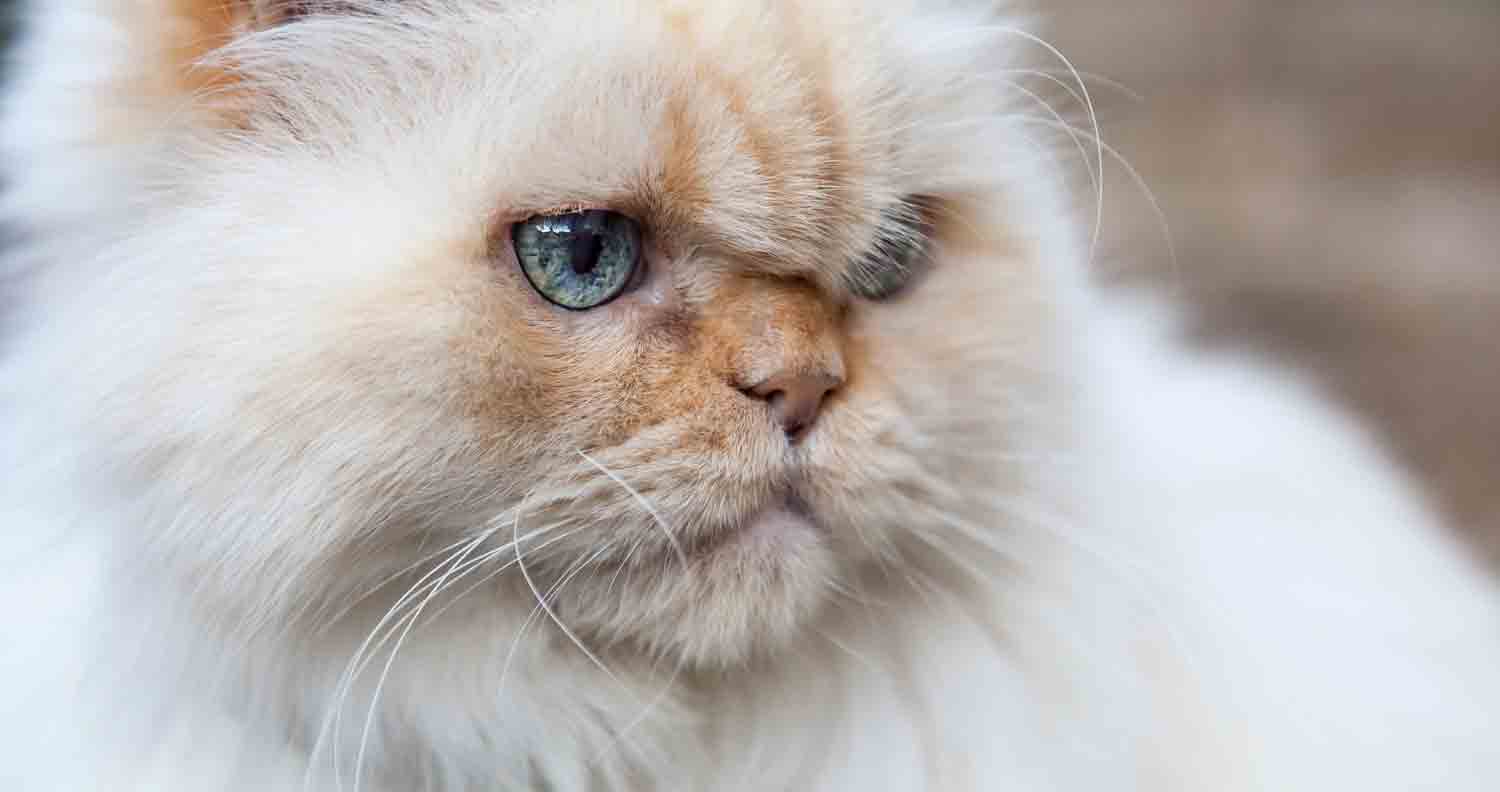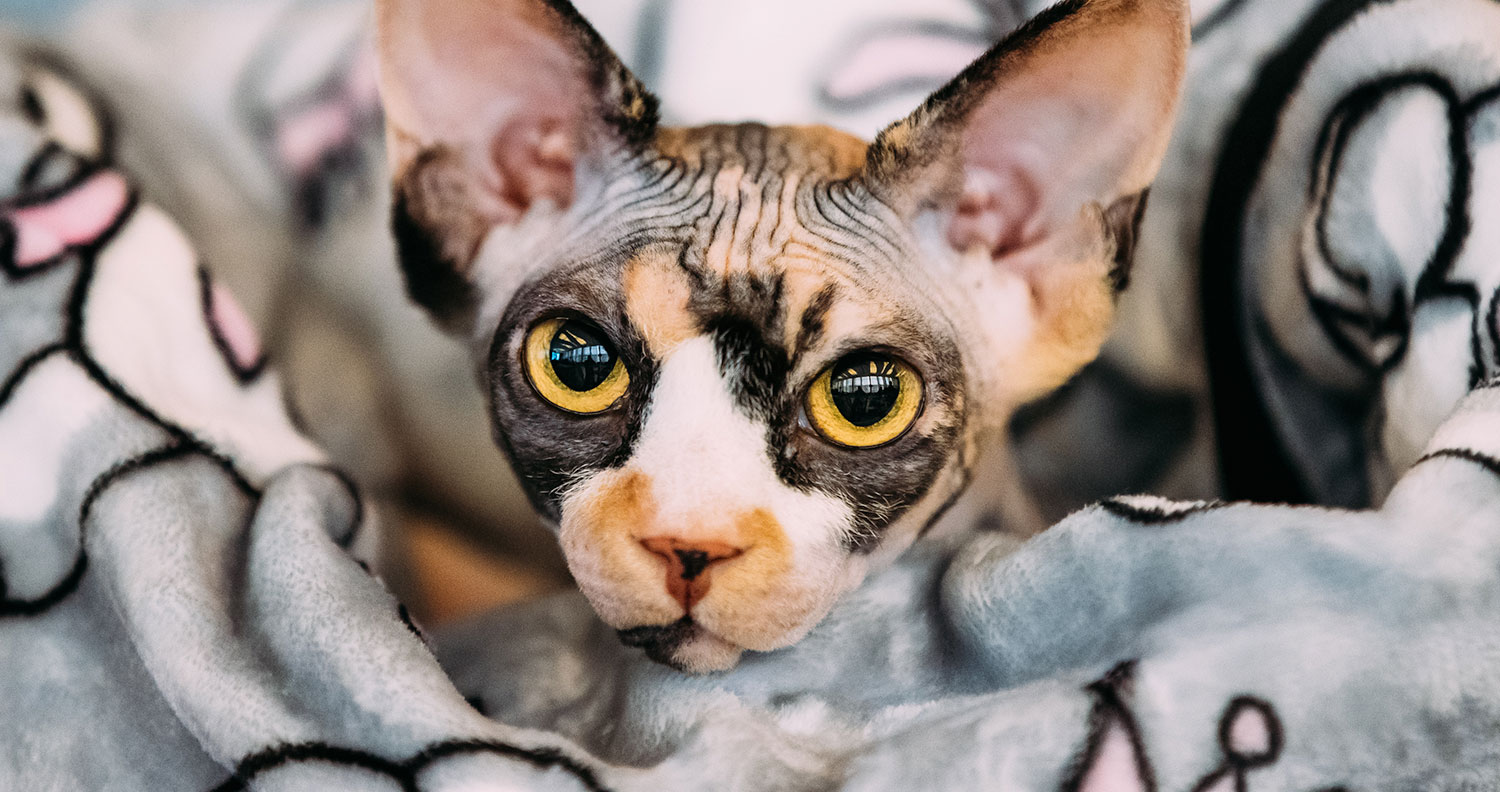No products in the cart.
Himalayan: Cat Breed Profile
Share:
Affectionately called "Himmies" by fans of the breed, the Himalayan cat is a hybrid of the Siamese and Persian cat. These stunning creatures have massive bones and tuns of long, silky fur that you just can't help but pet. Most Himmies also have Siamese coloring and amazing blue eyes.
These mid-to-large cats are stocky and thick-bodied, with a round abdomen, a wide chest, and a sturdy structure. Himalayan cats might look a little chunky, but they're usually more muscular than chubby.
Like the Maine Coon, many people see the Himalayan as a gentle giant, with an affectionate nature and a need for constant attention. These playful kitties are pretty high maintenance, but they're worth the work for many pet parents.
A Quick History of the Himalayan Cat
Himalayan cats are one of the newer cat breeds on the market today. They only started to appear in the 1920s and 30s, when breeders around the world tried to produce a cat with Siamese markings, and a Persian body. In 1935, two Harvard medical researchers created the Himalayan by cross-breeding a Siamese female and a Persian male.
Interestingly, the scientists that created the cat weren't actually looking to a create a new breed – instead, they wanted to showcase how genetic traits are inherited. Breeding did slow down a little during the Second World War. However, American Breeders picked up again after the war was over.
The hybrid Himalayan cat earned official recognition by the Cat Fanciers' Association in 1957. The cat is also listed with the American Cat Fanciers' Association. A few years later, the cat fancier's association combined the Persian and Himalayan cat breeds because of their shared body type. Many organizations still don't see Himalayan cats as a separate breed today.
Himalayan Cat Breed Overview
Experts only class Himalayans as medium-sized cats, despite their stocky build and heavy bones. With the huge masses of fur that Himalayan's have, they usually seem a little bigger than they really are.
Characteristics / Attitude of the Himalayan Cat
The Himalayan cat is an interesting looking breed. The body of these cats is short and stocky, with thicker legs and a short neck. Most Himalayan cats have a shorter tail, and heavy bones, while the ears are a little smaller than with most cats. Himalayans have large heads and very big eyes; the face is quite flat when viewed in profile – similar to a Persian.
Despite their stocky profile, Himalayan cats are laid back cats with large amounts of energy that often comes in bursts. Himalayans will sleep in your lap, next to you, or around the house.
Himalayan Characteristics & Attitudes
Himalayan Cat Breed Care
Himalayans are a delight to have around the house, with their caring and playful attitude, but they do require a lot of work. If you don't have the time to groom your kitty every day, then you might not be well-suited for a Himalayan cat. The long and silky coat of the Himalayan cat often ends up full of tangles and mats without help.
You'll need a wide-toothed comb to brush your Himalayan every day. You might also need to set up regular appointments with a professional groomer to keep your cat's coat as clean as possible. Fortunately, Himalayan cats love attention from their owners, so they're relatively easy to groom.
The Himalayan also scratches quite frequently, so it's worth trimming this cat's nails regularly. Examine its paws often and check when they need a trim to keep paws healthy and free from injury. It's also a good idea to examine your cat's ears regularly. Pointed ears of the Himalayan can easily capture debris and dirt, which sometimes leads to infections.
If you notice that your Himalayan's ears are dirty, use a cotton ball to remove the dirt gently. You should also never use a cotton swab on your cat's ears because this can lead to serious problems with the ear's inner structure. If you notice that the ear is inflamed or very red, take them to the vet as soon as possible.
Another thing to keep in mind when caring for a Himalayan cat, is that these cats don't have massive exercise requirements, but they're very playful and can often get into mischief if they're bored. You can keep your kitties entertained and engaged by providing plenty of cat toys and giving them a few minutes of play every day. Something as basic as a ball of scrunched up paper will be enough to keep this cat entertained.
Himalayan Cat Common Health Issues
Although the genetics of a Himalayan cat do come with a few protections against inherited health conditions, they can sometimes be extra susceptible to specific conditions. While not every Himalayan cat will have health concerns, it's important to know about these problems, just in case they do develop in your cat.
Some common health issues among Himalayans include things like Polycystic Kidney disease, which occurs when a number of cysts appear on your cat's kidneys. This issue isn't always immediately life threatening, but it needs treatment as soon as possible. Preventing the development of new cysts is essential.

Respiratory issues are also a common problem among Himalayan cats because they have flattened faces. The flattened face of the Persian is very susceptible to breathing issues, like difficulty swallowing and breathing, or inability to perform physical activities.
Ringworm is one other issue common for Himalayans, the long, thick coat of these cats is slightly more difficult to groom, leading to an increased risk of ringworm developing. Be sure that you check your cat's skin for scaly or red spots during potential grooming sessions. See your vet straight away if you think an infection might be coming.
Recommended Diets for Himalayan Cats
The bad news for pet owners on a budget is that you will need to invest in a special diet for a Himalayan cat. The exact nutritional needs of your feline will depend on its weight, age, and activity levels. It's important to talk to your vet about a potential feeding schedule. Himalayan cats are susceptible to a lot of hairballs because of their long coats too. That means it's important to ask your vet about specialty foods and treats that help with hairballs.
Feline obesity is also a common problem that's growing with a lot of breeds these days. If you're concerned that you might be overfeeding your cat, it's worth talking to your vet about how you should be managing food. Customized diets are essential here.
Himalayan Cat Pros & Cons


Pros
Cons
Some Helpful Facts about Himalayan Cats
Himalayan's are generally quiet and laidback cats, with a lot of fun quirks to enjoy. However, in 2012, a Himalayan named Colonel Meow set a record for having the longest hair. Himalayan cats have also appeared on the big screen. You've seen Himalayans on Meet the Parents, and Homeward Bound movies. Himalayans love children are very attached to humans too.
Martha Stewart also owns Himalayan cats. The world's smallest cat was also a Himalayan. This tiny kitty named Tinkertoy was only 7.5 inches long, and 2.75 inches tall.
Final Thought on Himalayan Cats
Himalayan cats are an amazing companion for people who love the stylish appearance of the Persian, with the coloring of the Siamese. These cats are very affectionate and loving in the right circumstances, and they have playful natures at times too.
With a Himalayan cat, you can spend all day petting and fuss over your feline, and they usually won't mind. That's a good thing though, as you're going to have to commit to quite a bit of grooming with this furry friend. Himalayan's are chunky sources of adoration, who love their human family very much. Just make sure you're prepared for the work of looking after one.
Share: